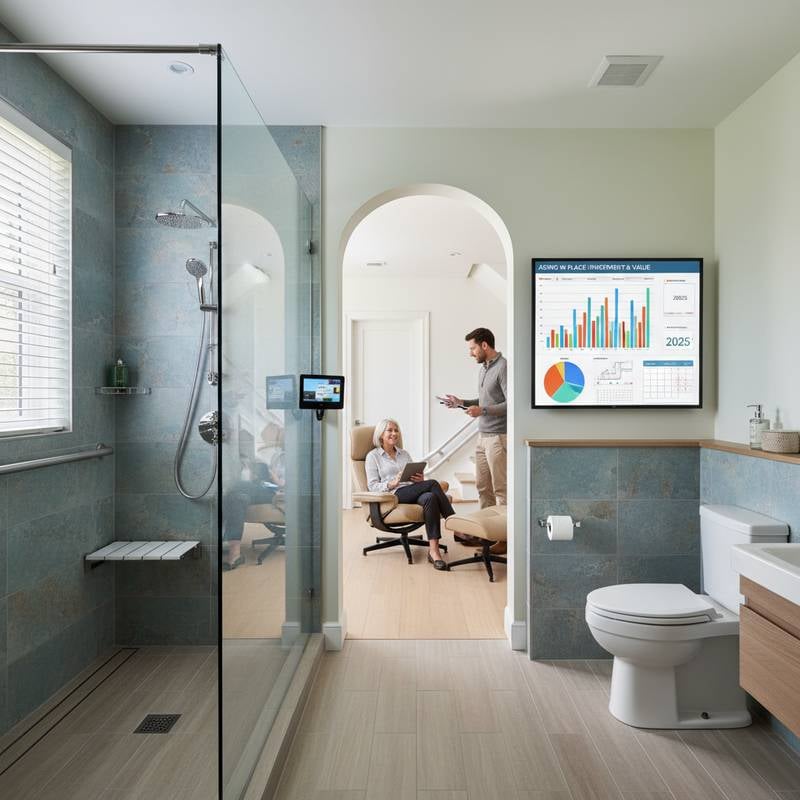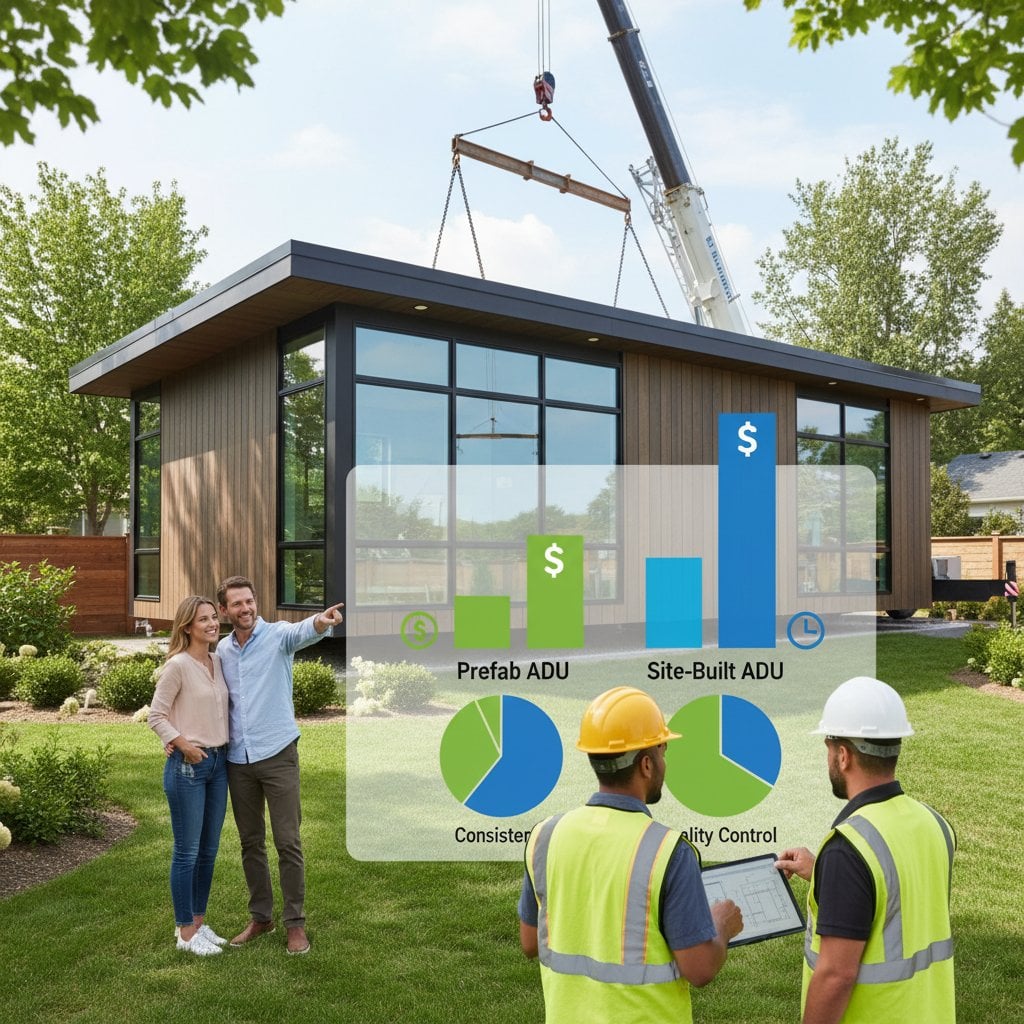Stay Home Longer: Aging-in-Place Remodel Costs and Smart Investments
Aging-in-place remodeling enables individuals to remain comfortable, safe, and independent within their own homes. Thoughtful upgrades prevent injuries, minimize maintenance demands, and elevate long-term property value. This guide details typical project costs, factors influencing expenses, and strategies for effective planning to create a residence that accommodates aging with grace.
What This Guide Covers
- Essential remodeling areas that enhance accessibility and safety
- Average costs alongside potential returns on investment
- Guidance on selecting professional help over do-it-yourself efforts
- Practical approaches to economize on expenses
- Professional advice for project planning and ongoing upkeep
Understanding Aging-in-Place Design
Aging-in-place design emphasizes accessibility, ease of movement, and overall comfort. The primary objective involves enhancing home safety while preserving aesthetic appeal. Elements such as zero-step entrances, expanded doorways, and curbless showers mitigate fall risks and simplify everyday activities.
Remodeling cost analyses indicate that incorporating universal design principles typically recoups 50 to 70 percent of expenses upon resale. These modifications extend beyond financial benefits by lowering potential costs related to healthcare or relocation to assisted living facilities. Such investments prove valuable for sustained well-being.
Common Aging-in-Place Remodel Projects and Costs
1. Bathroom Accessibility Upgrades
Bathrooms represent the primary focus for many aging-in-place initiatives due to inherent hazards like slick surfaces and confined areas. Prioritizing safety modifications becomes crucial in these spaces.
Typical costs:
- Installation of a walk-in shower featuring grab bars and a built-in bench: $8,000 to $15,000
- Conversion to a curbless shower design: $3,500 to $10,000
- Upgrade to a comfort-height toilet paired with a widened doorway: $1,200 to $2,500
DIY vs. Professional:
Homeowners with experience may handle fixture replacements independently. However, alterations involving plumbing or waterproofing demand the expertise of licensed contractors to ensure reliability.
Design Tip:
Select non-slip flooring options, such as textured porcelain tiles, to enhance traction. Opt for lever-style faucets that facilitate simpler operation and precise control.
2. Kitchen Modifications
Kitchens adapted for aging prioritize reachability, illumination, and user-friendliness. Features like adjustable-height counters and pull-out shelving units promote secure and pleasant meal preparation.
Typical costs:
- Installation of lowered counters and pull-out shelving: $4,000 to $10,000
- Addition of under-cabinet lighting and accessible storage solutions: $2,000 to $5,000
- Placement of a side-by-side refrigerator and wall-mounted oven: $3,000 to $8,000
DIY vs. Professional:
Minor enhancements, including lighting installations or hardware changes on cabinets, suit do-it-yourself approaches. Substantial cabinetry adjustments or electrical modifications necessitate professional intervention.
Expert Insight:
Specialists certified in aging-in-place design advise maintaining a minimum of 42 inches of clearance between counters. This allowance supports navigation with wheelchairs or walkers.
3. Entryway and Mobility Improvements
Modifying entryways enhances safety and usability for all household members. These changes facilitate seamless transitions into the home.
Typical costs:
- Construction of a zero-step entry or ramp: $2,500 to $8,000
- Widening of an exterior door: $1,000 to $3,000
- Addition of handrails and enhanced lighting: $500 to $1,500
DIY vs. Professional:
Projects like installing grab bars or outdoor lighting may complete over a weekend by skilled homeowners. Alterations to stairs, doors, or ramps require builders versed in accessibility regulations.
Design Tip:
Incorporate slip-resistant decking materials for outdoor surfaces. Integrate motion-sensor lighting to boost visibility during entry and exit.
4. Wider Doorways and Hallways
Standard doorways measure 32 inches wide, yet accessibility standards recommend at least 36 inches to accommodate wheelchairs. Expanding these openings often involves reframing walls and rerouting electrical components.
Typical costs:
- Widening of an individual interior doorway: $700 to $2,500
- Broadening of hallway dimensions: $3,000 to $8,000
DIY vs. Professional:
Tasks encompassing framing or electrical adjustments must proceed under the supervision of licensed experts. Compliance with building codes remains paramount.
5. Lighting and Smart Technology
Adequate illumination diminishes the likelihood of falls and aids vision changes associated with age. Automated systems manage lighting, temperature controls, and security features effortlessly.
Typical costs:
- Comprehensive upgrade to LED lighting throughout the home: $1,000 to $3,000
- Installation of motion-sensor lights: $200 to $800
- Implementation of smart home automation systems: $1,500 to $5,000
DIY vs. Professional:
Wireless smart devices lend themselves to straightforward homeowner installation. Hardwired configurations or intricate networks require professional configuration for optimal performance.
Expert Insight:
Occupational therapists advocate for layered lighting arrangements at various heights. This approach enhances visibility while minimizing glare.
Money-Saving Strategies and ROI
Aging-in-place remodeling need not occur in a single comprehensive effort. Instead, sequence projects according to immediate priorities and financial capacity.
Approaches to minimize expenses:
- Integrate multiple projects to consolidate labor and permitting costs.
- Retain and repurpose existing fixtures where feasible.
- Explore community grants or financing options tailored to accessibility enhancements.
- Prioritize durable materials that curtail ongoing maintenance requirements.
Modest interventions yield substantial returns. Features such as curbless showers, elevated toilets, and broader doorways attract a diverse buyer demographic, thereby bolstering resale potential.
When to Hire a Professional
Certain undertakings prove suitable for capable homeowners, yet others demand specialized knowledge. Engage professionals for remodels that include:
- Modifications to structural elements or load-bearing walls
- Adjustments to plumbing or electrical systems
- Necessity for permits or official inspections per code
- Fabrication of custom cabinetry or waterproof tiling
Selecting the right professional:
Seek contractors holding certifications in aging-in-place or universal design principles. Review references and inspect portfolios of prior work. Confirm possession of insurance and valid licenses prior to agreement. Insist on comprehensive written estimates delineating individual costs.
Maintenance and Longevity Tips
Following completion of remodeling efforts, regular maintenance sustains safety and functionality over time.
Essential maintenance checklist:
- Examine grab bars and handrails biannually to verify secure attachment.
- Replace any failed bulbs immediately to preserve illumination standards.
- Apply sealant to shower grout each year to avert water intrusion.
- Arrange routine HVAC filter replacements and appliance tune-ups.
Selections like vinyl plank flooring, quartz surfaces for counters, and stainless steel accents diminish future care expenses.
Planning Your Aging-in-Place Remodel
Initiate the process with a thorough home evaluation to pinpoint existing hazards and anticipate evolving requirements. Consult a certified aging-in-place specialist or occupational therapist for prioritization assistance. Develop a blueprint that harmonizes financial considerations, safety imperatives, and individual preferences for comfort.
Budgeting typically ranges from $15,000 to $50,000 for comprehensive aging-in-place transformations, influenced by residence dimensions and project extent. Divide initiatives into phased segments for practicality.
Enhancing Independence Through Targeted Home Adaptations
Aging-in-place remodeling transcends mere renovations; it represents a commitment to autonomy, security, and enriched living. Modifications ranging from traction-enhanced flooring to automated illumination foster an environment that evolves alongside personal needs. Through meticulous preparation, collaboration with skilled experts, and selection of resilient materials, homeowners secure prolonged residence in cherished spaces, reaping sustained comfort and reassurance.










